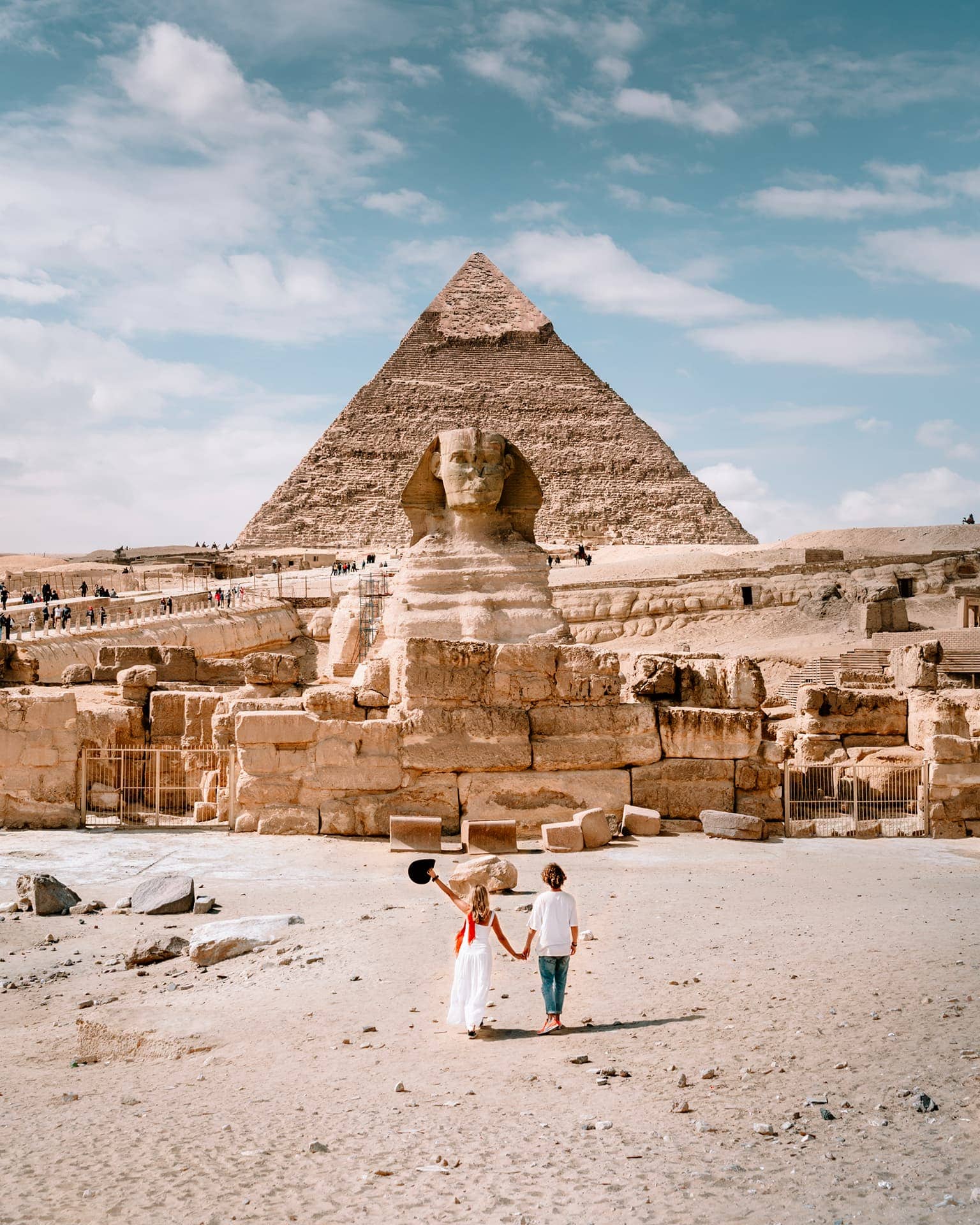the Tomb of Akhti Hotep in Saqqara:
Tomb of Akhti Hotep (Mastaba D64):
- Location: The tomb is located in the north-west part of the necropolis of Saqqara, to the west of the Step Pyramid of Djoser.
- Design: It follows a standard mastaba design, measuring approximately 80½ feet by 63 feet with an inward slope of 1:20. The mastaba was constructed using limestone blocks faced with fine Tura limestone.
- Burial: The tomb was the common burial site of two high commissioners from the end of the Vth Dynasty:
- Vizier Akhethotep
- His son Ptahhotep II
- Discovery: Mariette discovered the tomb during excavations in 1850.
- Documentation: The only detailed documentation comes from Norman de Garis Davies in the early 20th century, although the mastaba has undergone significant reconstruction since then.
- Entrance and Chapel:
- A modern ramp provides access to a courtyard area with entrances to two mastabas.
- The entrance to D64 (Ptahhotep’s mastaba) is located at the southern end, facing north.
- The mastaba of Akhethotep (Ptahhotep’s father) is immediately in front of the ramp.
- The tomb was initially named the “Tomb of Ptahhotep,” but this is incorrect and results from its early history when only the chapel of Ptahhotep was open to the public.
- Complex and Visibility:
- The complex containing this mastaba is hardly visible from orbital cameras due to everything being the same color as the surrounding desert sand.
- The D64 complex also contains several other smaller mastabas that have not survived as well as those of D62 and D64.
- Family Relationship:
- Ptahhotep (D62) is the eldest and usually referred to as Ptahhotep I.
- Akhethotep (D64) was the son of Ptahhotep.
- Ptahhotep (D64) shares the mastaba with his father and is usually referred to as Ptahhotep II.
- Akethotep and Ptahhotep, sons of Ptahhotep II, are mentioned as such in D64.
- The burial place of the youngest Akhethotep was almost certainly the mastaba (E17) located to the south-east of the Pyramid of Djoser, but north of the causeway of Unas.
- The whereabouts of the youngest Ptahhotep are unknown.
- Decorated Areas:
- The painted reliefs in Ptahhotep’s section of the tomb portray a wide range of animals, from lions to hedgehogs to domesticated cattle and fowl brought as offerings to the deceased.
- Ptahhotep himself is portrayed resplendent in a panther-skin robe inhaling perfume from a jar.
- Akhethotep and Ptahhotep were senior royal officials during the reigns of Djedkare (2414–2375 BC) and Unas at the end of the 5th Dynasty.
- The tomb is dated to 39 years between 2414-2375 BC.
- The false doors on the East and South walls of Ptahhotep’s chapel and the west wall of Akhti-Hotep’s chapel provide inscriptions for dating.
- The tomb construction involved skilled builders, and there may have been religious purposes such as a route for the Ba to access the terrestrial world.
- The carved area of the focal west wall is constructed from two massive limestone slabs.
- Wall scenes are divided into horizontally stacked registers, grounded by a distinct baseline.
- The southern false door of Ptahhotep exemplifies the efforts of craftsmen in constructing the “house of life.”
- Maxims of Ptahhotep:
- Ptahhotep’s important functions and affinity to Ma’at sometimes led to him being identified as the author of the famous Maxims of Ptahhotep, although certainty remains elusive.
- Other Titles Held by Ptahhotep:
- Inspector of the priests of the pyramid cities of Ny-user-Re, Men-Kau-Hor, and Djed-Ka-Re Isesi.
- Priest of Ma’at or the epithet “who likes Ma’at.”
- Other titles related to royal power and administration.
- Akhethotep’s Antechamber and Chapel:
 English
English











